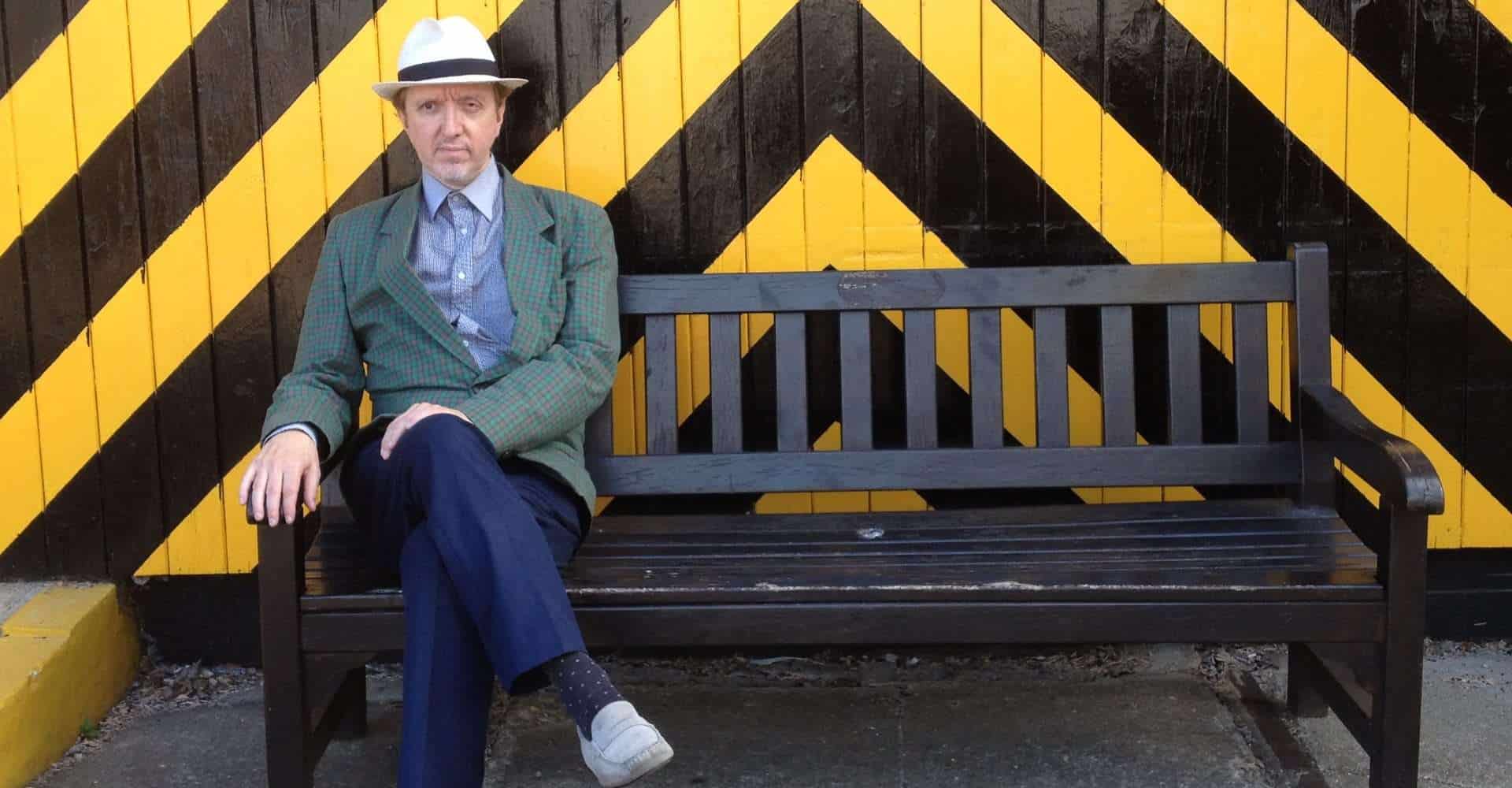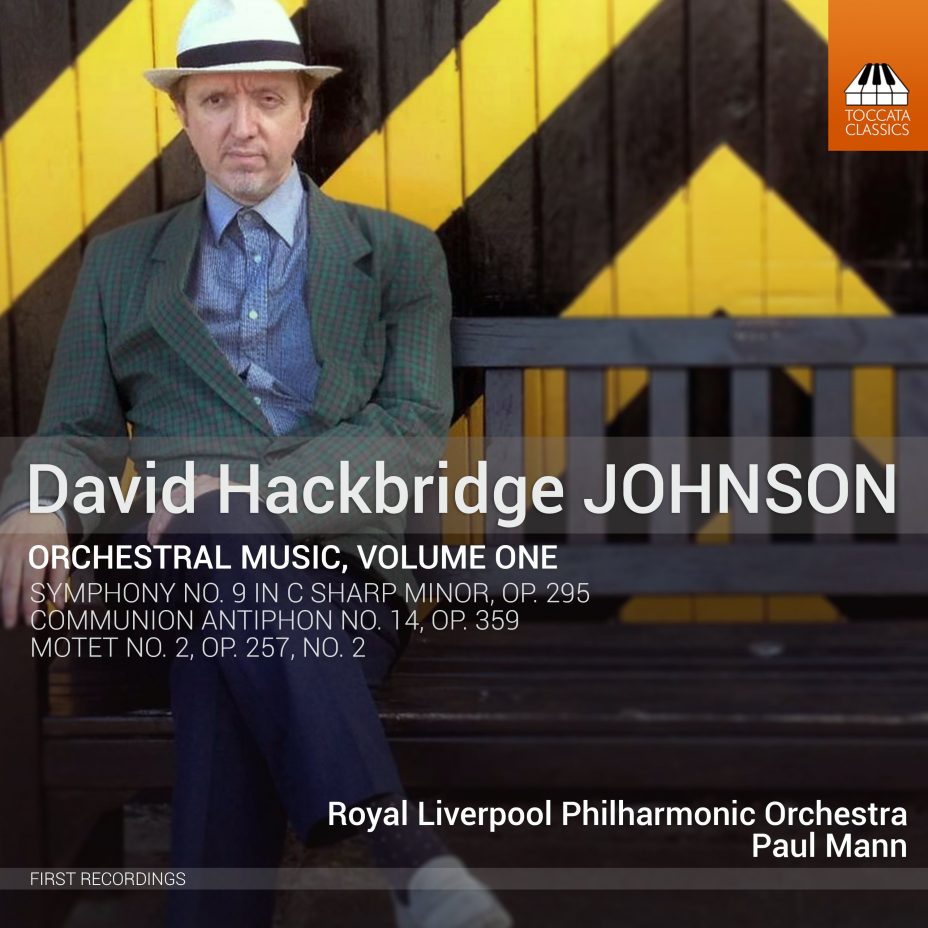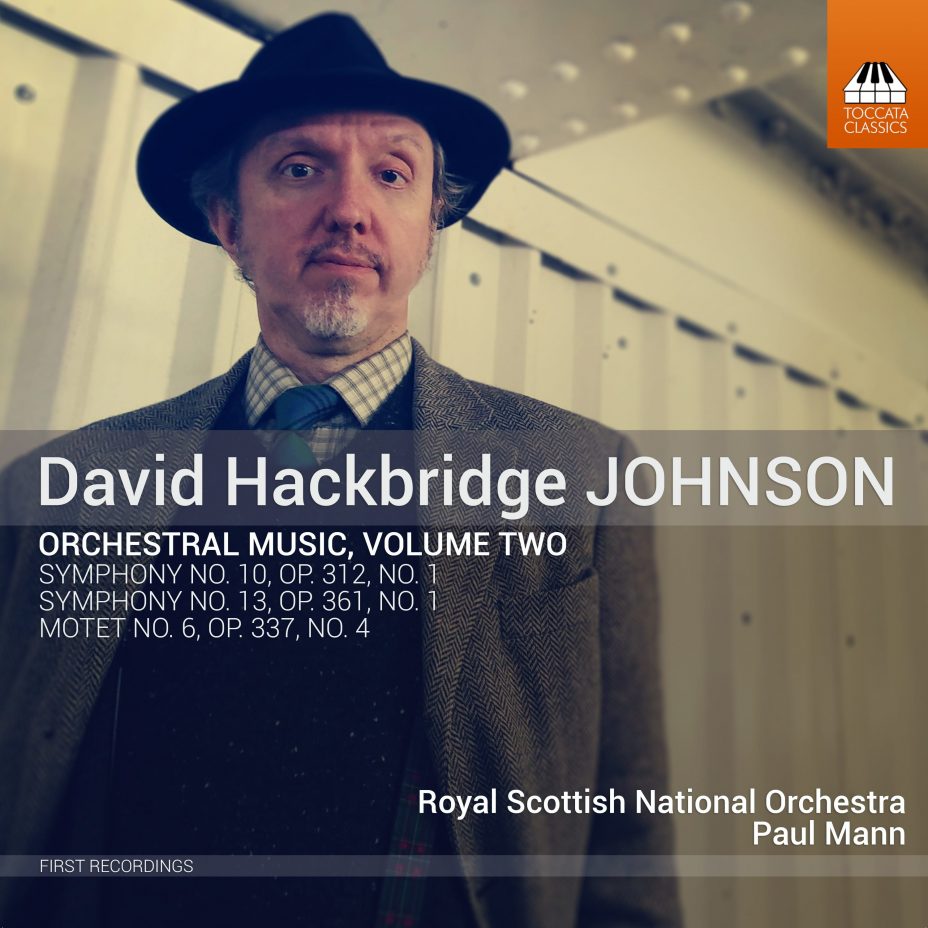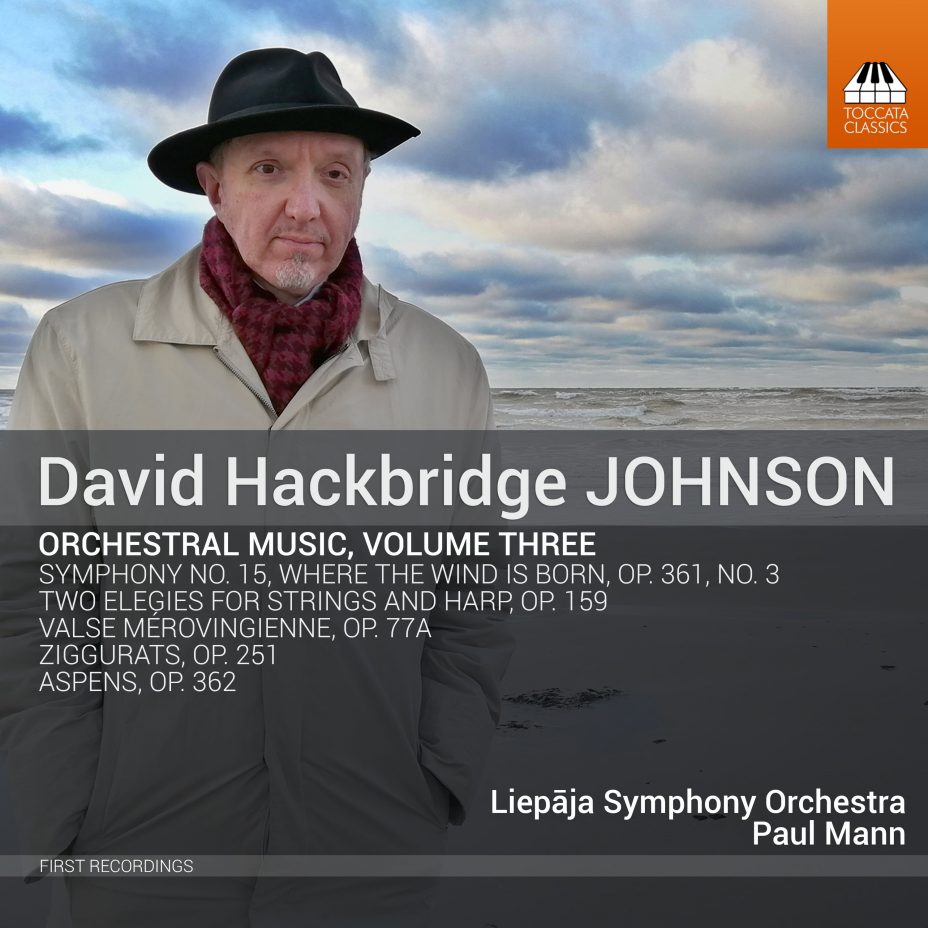“I gained my first exposure to the music of David Hackbridge Johnson when I received a link from an Eastern Orthodox priest friend with whom I’ve swapped numerous musical “finds,” given our similar tastes in music. He told me that I simply must listen to the first movement of Hackbridge Johnson’s Symphony No. 9 on this link. I did so and was blown away by what I heard on this recording produced by the redoubtable Martin Anderson of Toccata Classics fame. This led me to contact both the composer and Anderson to see if I could obtain all of the available recordings of the composer’s music to do an overview of it.…
Since this article covers a fair number of works (albeit a small fraction of the c. 500 works Hackbridge Johnson has written), I shall not go into great detail in any of the works listed in the above headnotes, but will simply attempt to give the reader some idea of what the music by this uniquely gifted composer is like. Perhaps the first thing to mention is that while he combines atonal and tonal styles in many of his works (as have numerous other composers), his compositional voice is absolutely unique and utterly distinctive. In that regard, he resembles his fellow countryman Havergal Brian, who to my ears sounds like no one else. The latter also often paints his numerous symphonies on very large canvases (I believe his Gothic Symphony still holds the record for duration), as does Hackbrige Johnson, all four of whose symphonies featured here exceed a half-hour in duration and No. 9 in C-sharp minor lasts the better part of an hour. This work also contains a rather unusual formal structure. While its opening movement is simply a sonata-form Allegro molto, with driving and leaping lines and a vivacious expression that immediately grab the listener’s attention, its second contains a set of theme and variations followed by a Passacaglia, another variation form. The seven statements of the theme are cast in a most un-passacaglia-like fashion, i.e., in constantly shifting meter, whereas that form is normally in triple meter. I found the composer’s skill in writing contemporary counterpoint particularly impressive… This symphony by itself should serve to keep Hackbridge Johnson’s name alive as long as there are music lovers around to enjoy it.
The composer’s unique sound world continues in the opening of Symphony No. 10, in which the interval of the perfect fourth has been replaced by that of the perfect fifth, the unusual scoring placing this interval on the top of the opening line to produce a sequence of parallel fifths—something forbidden in earlier eras, but very effective here.… This astonishing Symphony No. 10 was written in the almost unbelievable space of a mere two months.
Symphony No. 13 was the first symphony after the 10th to have been completed by its composer, explaining its inclusion here. (Nos. 11 and 12 are still unfinished or not yet in their final form as of this writing, as is a Symphony No. 16). Its three movements require 37 minutes to perform, making it also a substantial work. The frenetic opening reminds me a bit of what the beginning of Sir Michael Tippett’s Second Symphony might have sounded like on steroids. The work here exudes a nervous energy in the upper instruments before the frenetic activity spreads, virus-like, to the entire orchestra. Only more than eight minutes in does the activity lessen up a good bit, evolving into rather dense textures that flow instead of flutter, although the latter character cannot be stifled for long. This work is, I believe, even more exciting than the two earlier symphonies—as high a bar those two works set—and, with its swoops and swirls of very fast notes in its final movement, is guaranteed to sweep the listener off his feet.…
The last of the four symphonies presented is No. 15, the main work in volume three of this Toccata Classics series devoted to the composer’s orchestra music. This symphony is subtitled “Where the Wind is Born,” a reference to Liepāja, Latvia. This city is situated directly on the Baltic Sea, meaning that it is subject to continual sea breezes that buffeted the composer as he walked along its beach, an activity that began to bring musical ideas to his mind. Appropriately enough, this work is dedicated to and performed by the orchestra in the city in which it was conceived (as well as to Martin Anderson). Hackbridge Johnson even included (upon the suggestion of Anderson) a Latvian folksong at the conclusion of the work.…
In all of these tremendously technically challenging works, Paul Mann has plumbed the depths of this complex music, instinctively knowing how to bring out the most important lines in these masterworks in which their composer bares his soul to the world. Under his leadership, the two orchestras on these three discs bring each of these works to life in a way that must thrill the composer as much as it does the listener.…
In summary, any one of the discs covered in this overview will provide an excellent introduction to the unique sound world of David Hackbridge Johnson, and doubtless one of these discs will be found on my next Want List.”
—David DeBoor Canfield, Fanfare
See the full article in the July/August 2023 (46:6) Issue of Fanfare or online for subscribers at fanfarearchive.com
All photos by Xiao Wei



